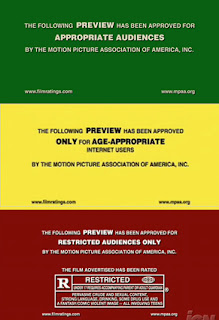Each of the main characters is associated with an animal.
Roy - is both a wolf and a dove,
Rachael - is connected to the spider,
Tyrell - Owl and
Deckard - to sushi (raw fish) and the unicorn.
Each creature also carries connotations of character:
Roy’s dove - a link to his final scene in which he holds a dove – a symbol of peace and often the soul, it flies from his hands when he dies.
Significance? the slow extinction of Earth’s natural animals and their replacement by replicants.
- Human fears replicants replacing all humans
- Or the preciousness of each individual, as once they are extinct (dead) nothing again will be exactly like them.
- In fiction,(for example His Dark Materials by Philip Pullman), the soul’s outward appearance often has that of an animal. The Point: Replicants have souls too despite their unnatural creation.
Roy - is both a wolf and a dove,
Rachael - is connected to the spider,
Tyrell - Owl and
Deckard - to sushi (raw fish) and the unicorn.
Each creature also carries connotations of character:
Roy’s dove - a link to his final scene in which he holds a dove – a symbol of peace and often the soul, it flies from his hands when he dies.
Significance? the slow extinction of Earth’s natural animals and their replacement by replicants.
- Human fears replicants replacing all humans
- Or the preciousness of each individual, as once they are extinct (dead) nothing again will be exactly like them.
- In fiction,(for example His Dark Materials by Philip Pullman), the soul’s outward appearance often has that of an animal. The Point: Replicants have souls too despite their unnatural creation.
The chess game between Tyrell and Sebastian:
Uses the conclusion of a game played between Anderssen and Kieseritzky (London, 1851). It is considered one of the most brilliant games ever played, and is universally known as "The Immortal Game".
Symbolism?
- The concept of immortality
- Represents the struggle of the replicants against the humans: the humans consider the replicants pawns, to be removed one by one.
- Or it represents the game between Tyrell and Roy who is stalking Tyrell.
Eye symbolism is also a key part of the narrative shown through images of:
- The eye in the opening shots - Replicants' eyes glow - Tyrell has huge glasses to make his eyes bigger - Eyes are used in the VK test to examine pupil dilation and seek emotional reactions/lies - The first person the replicants go to is Chew, at the Eye Works, who makes the Nexus’ eyes. He says "Eyes, eyes... I do only eyes" - Roy replies "Chew, if only you could see what I've seen with your eyes!" - Leon tries to stick his fingers in Deckard's eyes and Roy kills Tyrell by sticking his thumbs in his eyes - Roy says "I've SEEN things you people wouldn't believe” and "I wanted to SEE you"The film’s theme, the quest for immortality, is linked to the ever-present eye motif:
- eyes are the windows to the soul, and only the soul is immortal
- The replicants’ underlying humanity is displayed through showing their ‘souls’ in this way, as well as through their attachments to each other.
- eyes are the windows to the soul, and only the soul is immortal
- The replicants’ underlying humanity is displayed through showing their ‘souls’ in this way, as well as through their attachments to each other.
There is also a lot of religious symbolism within the narrative. Roy, who is shown to have a dual nature, is shown on the one hand to be Lucifer and the other replicants are fallen angels because they were inherently benign creatures who became violent only through the neglect of a corrupt society. Roy paraphrases part of William Blake’s “America: A Prophesy” which supports the theory that the replicants are representing the fallen angels.Roy: "Fiery the angels fell, // Deep thunder roll'd around their shores // Burning with the fires of Orc." Blake: "Fiery the angels rose, // And as they rose deep thunder roll'd // Around their shores: indignant burning with the fires of Orc."In the light of this idea the screenwriter plays with the idea that these human creations show us more about the ugliness of man then they do of the created.
On the other hand, Roy can be shown to be Christ. As he begins to cramp and die Roy puts a nail through his palm – a symbol of crucifixion. The society was not ready for replicants on Earth and so programmed them to die after only a glimpse of the world. When Roy dies it is a release from his torment. 












































